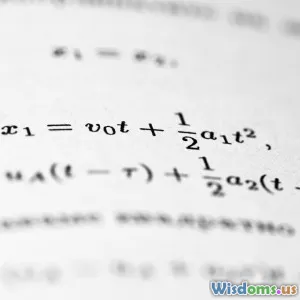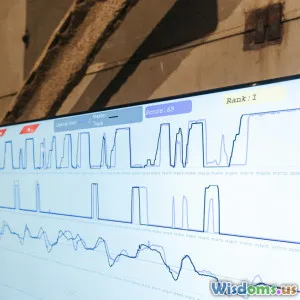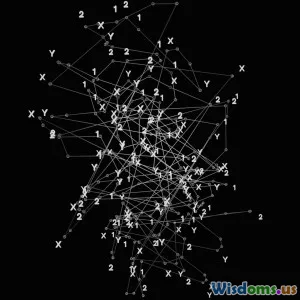
Hands On Tutorial Extracting Signal from Noise Using Advanced ANOVA
9 min read Unlock the power of Advanced ANOVA to reliably extract signal from noise in complex data sets with this hands-on tutorial. (0 Reviews)
Hands-On Tutorial: Extracting Signal from Noise Using Advanced ANOVA
Introduction
In today’s data-rich world, sheer volume often hides the true insights researchers seek. Data can be plagued by noise—random variability that masks the underlying signal we want to detect. Distinguishing meaningful effects from irrelevant fluctuations is a pivotal skill in statistics and data analysis.
One of the most powerful tools for this purpose is Analysis of Variance (ANOVA). While ANOVA itself is widely used, mastering advanced techniques can accentuate your ability to extract subtle signals from noisy datasets effectively. This tutorial takes a deep dive into advanced ANOVA methods, empowering you to conduct nuanced analyses that yield actionable insights.
Whether you are a data analyst, researcher, or student, this guide will walk you through the principles, applications, and intricacies of Advanced ANOVA with real-world examples.
Understanding the Basics: Signal, Noise, and ANOVA
Before climbing the mountain of Advanced ANOVA, let's remind ourselves about what 'signal' and 'noise' truly mean in statistical contexts.
What Are Signal and Noise?
- Signal refers to the true underlying effect or pattern present in the data — the meaningful variation that explains differences between groups or conditions.
- Noise represents random error or unexplained variability that clouds or obscures the signal.
In research, the goal is to maximize signal detection while minimizing the disruptive impact of noise.
Fundamental ANOVA Concepts
ANOVA helps test whether means differ across multiple groups by partitioning the total variance in the data into components attributable to the signal (between-group variance) and noise (within-group variance).
The F-test generated in ANOVA compares these variances. Higher ratios indicate stronger signals relative to noise. But in complex designs, conventional one-way ANOVA might fall short, prompting the need for more advanced approaches.
Diving into Advanced ANOVA Techniques
1. Factorial Designs and Interactions
Instead of analyzing one factor at a time, factorial ANOVA evaluates two or more factors simultaneously, along with their interactions. This unveils nuanced effects where combinations of factors produce significant changes that simple ANOVA might miss.
Real-world example:
Imagine a pharmaceutical trial testing two drugs (Factor A: Drug Type) over three dosage levels (Factor B: Dosage). Factorial ANOVA not only shows main effects of each factor but reveals interaction effects, e.g., Drug A working best only at medium dosage.
2. Mixed-Effects Models
Mixed-effects ANOVA models incorporate both fixed effects (systematic experimental factors) and random effects (source of random variation such as subjects or batches).
They are essential when observations are correlated or hierarchical, e.g., repeated measures from the same subject or data gathered across multiple locations.
Example:
In educational research, test scores (response) might be influenced by teaching methods (fixed effect) and classrooms within schools (random effect). A mixed-effects ANOVA accounts for noise at multiple levels, increasing precision in signal estimation.
3. Unbalanced Designs and Type III Sums of Squares
Real datasets often have unequal group sizes causing imbalance, which complicates variance partitioning. Advanced ANOVA uses Type III sums of squares to provide unbiased tests adjusting for imbalance.
Ignoring this can inflate error rates or reduce power.
4. Multiple Comparisons and Post-hoc Tests
After detecting a significant overall effect, pinpointing which groups differ requires advanced post-hoc comparisons using methods like Tukey’s HSD, Bonferroni corrections, or Dunnett’s test. These techniques control the family-wise error rate despite multiple comparisons.
Applying these thoughtfully helps separate true signals from false patterns.
Step-by-Step hands-on Tutorial: Applying Advanced ANOVA
Let’s bring the theory to life with a practical example using Python and the statsmodels library.
Dataset Context
Suppose we have agricultural data assessing crop yield affected by two factors:
- Fertilizer Type (Factor A): Organic, Chemical
- Irrigation Level (Factor B): Low, Medium, High
Data was collected across multiple fields (random effect).
Step 1: Load and Preprocess Data
import pandas as pd
import statsmodels.api as sm
from statsmodels.formula.api import mixedlm
# Sample simulated data (this should be replaced by your actual dataset)
data = pd.DataFrame({
'yield': [3.5, 4.1, 5.2, 4.7, 6.3, 6.6, 4.4, 5.0, 6.9, 5.5, 7.0, 6.8],
'Fertilizer': ['Organic', 'Organic', 'Organic', 'Chemical', 'Chemical', 'Chemical', 'Organic', 'Organic', 'Organic', 'Chemical', 'Chemical', 'Chemical'],
'Irrigation': ['Low', 'Medium', 'High', 'Low', 'Medium', 'High', 'Medium', 'High', 'Low', 'Medium', 'High', 'Low'],
'Field': ['A', 'A', 'A', 'A', 'A', 'A', 'B', 'B', 'B', 'B', 'B', 'B']
})
Step 2: Define the Mixed-Effects Model
model = mixedlm('yield ~ Fertilizer * Irrigation', data, groups=data['Field'])
result = model.fit()
print(result.summary())
Interpretation:
Review fixed effects coefficients and interaction terms from the summary. Significance shows where meaningful signals exist.
Step 3: Conduct Post-Hoc Tests
Use packages such as statsmodels or scikit-posthocs for pairwise group comparisons with corrections.
Step 4: Visualize Results
Graphs such as interaction plots or boxplots clarify relationships between factors.
import seaborn as sns
import matplotlib.pyplot as plt
sns.pointplot(x='Irrigation', y='yield', hue='Fertilizer', data=data, dodge=True, markers=['o', 's'], capsize=.1)
plt.title('Interaction Plot: Fertilizer vs Irrigation on Yield')
plt.show()
Best Practices for Noise Reduction Using Advanced ANOVA
- Design experiments carefully: Randomization and blocking reduce unwanted variation.
- Check Assumptions: Verify homogeneity of variances and normality of residuals.
- Account for Random Effects: Include random factors to model inherent variability.
- Use Suitable Type of Sums of Squares: Especially in unbalanced designs.
- Adjust for Multiple Testing: To avoid inflated false positives.
Real-World Impact: Why Mastering Advanced ANOVA Matters
- Agriculture: Optimizing fertilizer and irrigation regimes under diverse environmental noise.
- Healthcare: Differentiating treatment effects amidst patient variability.
- Manufacturing: Identifying quality control signals in production processes from noisy measurements.
Dr. Elizabeth Black, a biostatistician, puts it succinctly: "The ability to parse signal from noise can transform guesswork into evidence-based decisions, driving innovation across sectors."
Conclusion
Extracting signal from noisy data is more than a statistical task—it's key to unlocking reliable knowledge in any field. Advanced ANOVA techniques offer robust, flexible frameworks to dissect complex data structures and reveal meaningful effects.
By mastering factorial designs, handling random effects with mixed models, managing unbalanced datasets, and applying rigorous post-hoc testing, you amplify your analytical precision.
Whether you’re analyzing crop yields, clinical trials, or business experiments, applying these hands-on advanced ANOVA methods equips you to make data-driven decisions confidently—conquering noise to hear the true signal clearly.
For continued learning, engaging with open datasets and experimenting with mixed models is highly encouraged. Practice empowers mastery.
Now, it’s your turn: take your data, apply these techniques, and extract signals hidden beneath layers of noise.
Rate the Post
User Reviews
Popular Posts




















